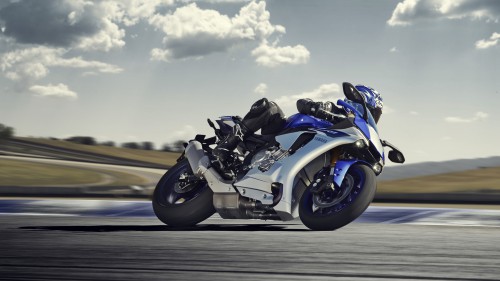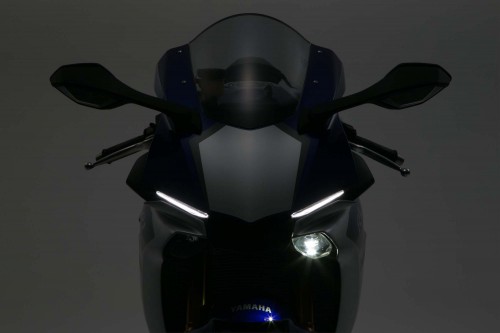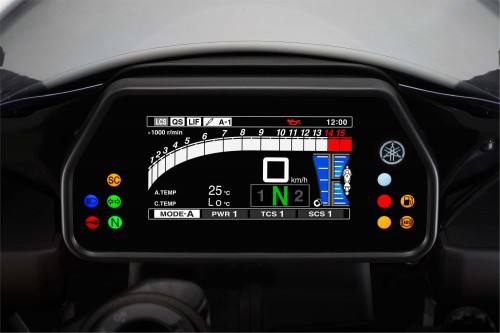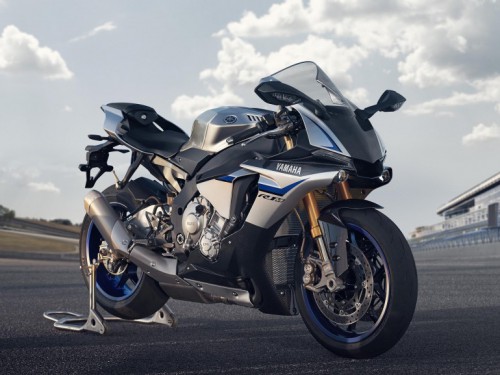The 2015 Yamaha YZF-R1 and R1M have been unveiled at the EICMA show a couples of weeks ago, the latter of the two being the “most MotoGP-inspired motorcycle ever”. The Japanese manufacturer has now officially announced the Europe prices for its flagship motorcycle. The new YZF-R1 has been priced at 18,495 € in the continent ($16,490 in the US) while the XZF-R1M costs 22,995 € ($21,990 in the US) . The new R1 is a giant leap forward for Yamaha but will it be enough against the tough competition?
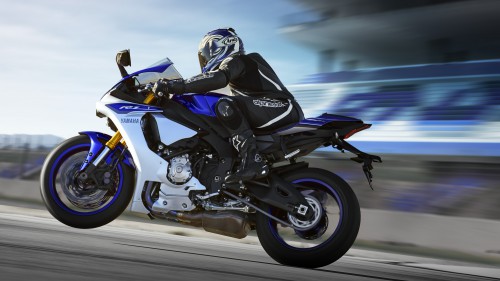
The new R1 is more compact…
RC213V-S, RSV-4RR, 1299 Panigale, S1000RR – it’s a hell of a competition in the litre-class category nowadays so Yamaha had to come up with something special. And they most certainly did. They decided to drop the street-focused design of the previous model and create a bike which is much more track-focused. They built the new R1 almost from scratch: it has a new frame, a redesigned engine, a sophisticated electronic system with a bunch of new acronyms, aggressive looking LED lights, magnesium wheels and titanium exhaust.
Did the Japanese develop the new R1 to put the manufacturer back at the front of the World Superbike grid? Looking at the specifications of the bike the engineers most certainly kept this idea in their minds while designing this beast. The bike features a new aluminum Deltabox frame with magnesium subframe at the back and the fuel tank is aluminum, too. Curiously, the position of the rider’s footpegs is fixed and no longer adjustable, this might be a problem for riders with longer legs. On the scale, Yamaha claims a 15 pound weight reduction versus the 2009-2014 generation superbike (the wet weight is just under 200kg / 443 lbs. The few guys who had the chance to sit on the new R1 all claim that it feels much more compact than the old one.
If you are interested in a headlight kit for the R1, see this Yamaha R1 YZF R6S 97-00-01-04-05-06-07-08-09-10-11-12-13 CCFL Halo Angel Demon Eyes Kit
The heart of the bike is a redesigned four-cylinder 998cc engine which is nine pounds lighter and a bit narrower than its predecessor. The engineers changed the bore/stroke ratio (they made it more oversquare for better top-end performance) but kept the uneven firing order from the previous model. There’s no word on the performance or the redline but rumors put it north of 200 horsepower. The real highlight of the bike is not the engine or the new frame but the electronic system which is absolutely incredible.
Just a couple of acronyms: YRC, RAT, SCS, LIF, LCS, QSS, UBS and so on and so on. You don’t have to bear with me through all of the acronyms but here is a short summing of most interesting systems:
If you are interested in a Yamaha R1 bike cover, see this: Genuine Yamaha O.E.M. 1998-2011 Yamaha YZF-R1 Bike Cover
Yamaha’s Inertial Measurement Unit (IMU) measures six axes of movement and includes both a gyro sensor and an accelerometer to measure position and acceleration in all directions. The IMU is part of the 10-setting Traction Control System (TCS). The SCS (Slide Control System) adjusts engine power if a slide is detected. The Launch Control System (LCS) limits the rev to 10,000 rpm even with the throttle wide open. The Quick Shift System (QSS) can cut briefly engine output for upshifts without the rider having to use the clutch or close the throttle. The new R1 has a new TFT-screen which has two modes: street and track. When in street mode, you can see information like speed, revs and odometer while track mode focuses more on lap times.
And here comes the shock: this new R1 has an even more track-focused version, the R1M. This beauty features carbon fiber fairings and fender, aluminum fuel tank, polished swingarm, Ohlins Electronic Racing Suspension and a Communication Control Unit Rider Machine Interface System which measures and records things like engine rpm, throttle position, speed, fuel consumption, braking pressure, and coolant temperature. Seriously. I can’t wait for the big showdown next spring.
